5.Using Antibacterial Soap
5.使用抗菌肥皂
There's been a lot of debate about just how effective antibacterial soaps are and whether or not they should even be marketed, but using them has been proven to have an impact on the environment.
关于抗菌肥皂是多么有效及它们是否应该被买卖的争论很多,但是使用它们已经被证实是对环境有影响的。
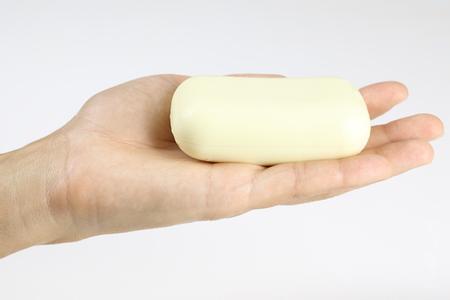
Johns Hopkins University Center for Water and Health has done a study on just what happens to all the antibacterial chemicals in your antibacterial soaps after they swirl down the drain. The most commonly used chemicals are triclocarban and triclosan, and while most of those chemicals are removed from wastewater when they're run through a treatment plant, they have to go somewhere. That somewhere is sewage sludge, which is then recycled for agricultural use. From there, those chemicals are transferred into the ground and ultimately into surface water. When triclocarban degrades, it degrades into two chemicals—both carcinogens. When triclosan is run through a treatment plant to make drinking water, it doesn't exactly make safe drinking water. Instead, it makes other chemicals that can include chloroform. And those chemicals travel through the food chain in plants, animals, and ultimately humans. The Centers for Disease Control and Prevention found traces of the chemicals originating with antibacterial soap in 75 percent of urine samples tested, all taken from people over five years old. Triclosan has been shown to interfere with the basic biological systems of a number of animals, including rats and a range of amphibians. It interferes with thyroid function, and when it builds up in the body, it causes early puberty in young animals, infertility, obesity, and cancer. Triclosan collects in the body's fatty tissues, and since animals—and humans—are higher up on the food chain, that means we're consuming all the trace amounts found in lower animals and getting a massive dose of the stuff.
约翰霍普斯金大学水与健康中心做了一项调研,是关于抗菌肥皂沫漩涡般流进下水道之后,它的抗菌化学物质所发生的变化。抗菌香皂含有的最普遍的化学物质是三氯二苯脲和二氯苯氧氯酚,当废水经过污水净化厂处理后,大多数的化学物质都会被分离出来,然后与下水道沉淀下来的烂泥融合,之后这些污泥又会被农业循环利用。自此,那些化学物质又被转移回了地面并最终进入地表水。当三氯二苯脲分解时,会分解成两种化学物质——两种都是致癌物质;当二氯苯氧氯酚经污水净化厂处理以产生饮用水时,它制出的并不全是安全的饮用水,相反,它会制造出包含三氯甲烷在内的其他化学物。而那些化学物游走于食物链中,经由植物,动物,最终进入人类体内。美国疾病控制和预防中心对五岁以上人口的尿样进行测试后发现,75%的人口尿样中含有抗菌肥皂所产生的化学物痕迹。二氯苯氧氯酚被证实干扰了包含老鼠和大量两栖动物在内的基础生物系统。它使生物体内的甲状腺功能紊乱,并且随着在体内的积累,其会导致幼小动物青春期提早,不孕不育、肥胖和癌症。二氯苯氧氯酚集聚在体内脂肪组织不易分解,并且由于动物及人类高高立于食物链之上,那就意味着我们正在消耗吸收低等动物体内积累起来的全部二氯苯氧氯酚,最终我们体内便会存储大量的此种化学物,并遭受其带给我们的伤害。
4.饲养猫咪
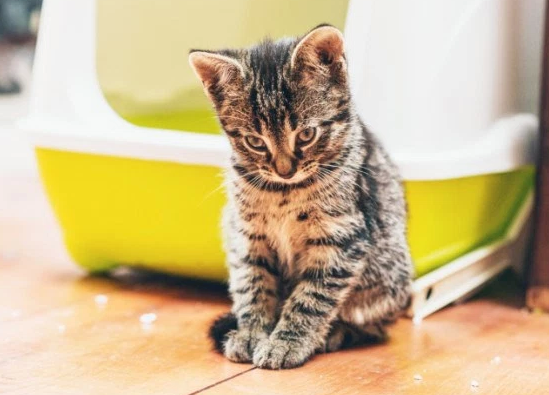
If you have an indoor cat, you probably go through a lot of cat litter. It's a pretty new invention, only around since 1947 when a Michigan woman asked Edward Lowe if he knew of an alternative to the sand or ash that she had been using. Lowe, who worked in the industrial absorbents business, gave her some clay—and the rest is history.
如果你养了一只猫,那么你一定用了很多猫砂。猫砂是一个很棒的发明,其起源可以追溯到1947年,当时一位密歇根州妇女向爱德华·劳询问是否知道某种沙子或者灰可以用来清洁猫的粪便。劳当时在一家生产吸收剂的工厂工作,于是给了她一些粘土,之后的事便众所周知了。
There is, of course, a big problem with that history. For decades, at least 75 percent of the different brands of cat litter available were made from bentonite clay. The clay is what gives the litter its scoopable quality. Considering America alone uses about 2 million tons of cat litter every year, that's a lot of clay the industry needs. So how do we get it? Strip mining. Lots and lots of strip mining. While that's bad no matter the angle, some people have had it incredibly bad. In 1989, Canada's Mineral Tenure Act was amended to include one of the key ingredients in cat litter—diatomaceous earth. That meant that suddenly, companies had the right of free entry onto people's land without a time limit to look for valuable minerals. Landowners in Canada have found their property strip mined for cat litter. Technically, landowners need to be compensated, but that process can take years. The Bepple family was one such victim, finding a plot of land they once used for grazing livestock and farming trees suddenly being strip mined for cat litter. There are tons of alternatives to clay litter on the market, from recycled paper litter to wood and plant-based litters. Those options aren't always widely available, though. In many cases, they can be incredibly costly.
当然,后来这引起了一个很大的问题。几十年来,至少有75%不同品牌的猫砂都由膨润土所制。这种粘土可以使猫砂和粪便凝结。试想一下,目前仅美国每年就要使用200万吨的猫砂,那么生产猫砂的工厂每年会需要多少粘土?那么我们是怎么得到这些粘土的呢?通过露天开采,非常频繁的露天开采。无论从哪个角度来看露天开采对于环境的伤害都是巨大的,但还是有人乐此不疲地开采粘土。1989年,加拿大的矿产法案修订就包含了对硅藻土(猫砂的关键制作原料之一)的开采。这就意味着,公司有权利无时间限制地进入人们的土地上寻找需求的矿产。加拿大的地主们在其拥有的土地上发现了很多猫砂的材料矿产资源。从技术上来看,这些地主们应该得到补偿,但是这个过程可能会花费很多年。Bepple家族便是这样的受害者之一,他们本来是找到了一块土地用于放牧和种植树木,但是却突然被别人开采做猫砂了。现在,市场上已经有很多材料可以替代粘土,从再生纸到木材和植物,应有尽有。但是这些材料并没有得到普及。并且在很多情况下,这些材料都非常昂贵。
3.Eating Farm-Raised Fish
3.吃养殖鱼
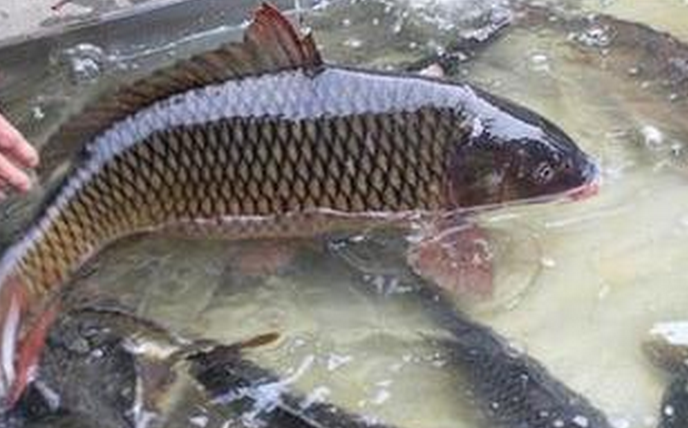
If there's anything that seems like it's an eco-friendly dinner choice, it's farm-raised fish. You're not removing fish from the open ocean, you're not putting other animals in danger, and you're not even adding to emissions given off from fishing boats. But farm-raised fish come with their own set of problems, and they're definitely not the eco-friendly choice you'd think.
在日常生活中,如果有什么看似是环保的选择的话,那么食用养殖鱼就是其中一种。如果你食用养殖鱼,就不用去公海区捕鱼,也不会让其他动物处于危险中,甚至你也不需要使用渔船,这样就不会产生渔船排放的污染物。但是养殖鱼也会存在一些自身问题,事实证明这根本不是一种环保的做法。
Shrimp aquaculture has resulted in the large-scale degradation of coastal areas, the destruction of wetlands, and salinization of freshwater areas and drinking water. Salmon farming relies on the release of fish food and nutrients into the water, which always results in wasted feed and a huge amount of fish droppings in the water. That's normally not a problem, but when a lot of fish are farmed in a small area, it's too much for the ecosystem to handle naturally. Extra waste products end up sinking to the bottom where they react with the medicines and other nutrients used to keep the fish healthy along with antifoulant agents used to keep nets clean. That means fish farms are a breeding ground for sea lice, which are as disgusting as they sound. More chemicals are used to control the sea lice, which end up killing the other marine life that was supposed to be in the area in the first place. There's also the very, very good chance that nonnative species of farmed fish are going to escape. That's introducing an invasive species to an ecosystem not prepared to handle it, and that means a whole other set of problems. Like many other environmental problems, there's absolutely no easy answer. Environmental agencies are now looking for ways to improve husbandry practices worldwide.
鱼虾养殖会导致沿海地区大规模退化、湿地遭到破坏以及淡水和饮用水盐碱化。养殖鲑鱼的话需要在水中投放鱼食和营养,这样就会导致饲料的浪费及大量的鱼屎堆积。这看似并不是多大的问题,但是当很多的鱼被养殖在一个很小的区域时,生态系统的自我调节能力便会超过限度,最终导致生态失衡。额外的废弃物最终沉入水底堆积起来,养殖人员还会使用药品和其他营养物质来保障鱼虾的健康,甚至会使用一些去污剂来保持渔网的整洁,而水底的废弃物又会和这些药品、营养物质以及去污剂发生化学反应。这就意味着养殖场也成为了海虱的滋生地,听起来就非常的令人恶心。而人们也会使用越来越多的化学物质来控制海虱的生长,最终还可能杀死原本应该存活在这一区域的其他水生生物。当然目前还有一种很好的机会去引进外来物种的养殖鱼。然而当生态系统还没有准备好如何调节的时候,这就意味着又会带来一系列新的问题。类似于很多其他生态问题,这一问题也很难得到解决。目前环境保护机构正在全球范围内寻找方法来改善这种问题。
2.吃大豆
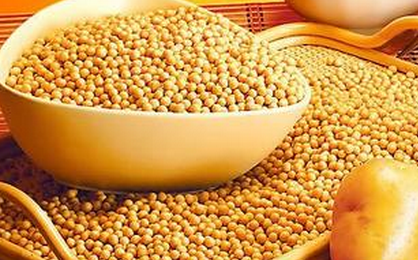
Turning to soy products has long been heralded as the healthier, more eco-friendly, and certainly more cow-friendly alternative to dairy products. Unfortunately, recent studies have shown that the environmental impact of soybean production is pretty devastating, too.
与乳制品相比,豆制品长期被视为更加健康,更加环保以及更佳的畜牧业友好型产品。不幸的是,近期的研究表明豆制品对环境的影响同样是毁灭性的。
Soybeans aren't just used in products like milk substitutes. They're also being used for non-consumables like soap and candles. And we're not the only ones eating soy, either; about 80 percent of the world's soy production goes into livestock feed. There's a huge demand for soy. As it grows in popularity, more space is needed to grow the beans. Since 2008, deforestation in Brazil has been on a steady decrease, a direct result of a ban implemented in order to counteract deforestation. The need for the ban comes on the heels of Greenpeace's numbers, which indicated that about 1.2 million hectares of soy was planted in Brazil's rain forest in 2005 alone. In addition to the usual impacts of things like pesticides and water use, there's a huge human rights issue that's grown up around the development of soy, too. The Brazilian government keeps a list of farms that have been caught using slave labor, and soy farms throughout the Amazon basin have been found guilty of luring people there with work, then seizing their documents and forcing them into slavery. There's also the rather shady practice of land-grabbing, leading to countless families being kicked off land that's deemed more valuable for farming than for living.
大豆不仅仅作为牛奶的替代品供食用。他们也同样地像肥皂和蜡烛那样作为非消耗品在使用。而且,不仅仅我们人类食用大豆,世界上百分之八十的豆类制品成为了家畜的食物。随着人口的增长,对大豆的需求也随之增加,更多的空间需要用于种植大豆。从2008年开始,巴西颁布并实施法令以防止滥砍滥伐,自此乱砍滥伐的现象已逐渐得到控制。此禁令颁布前不久,绿色和平组织的一份数据显示,在仅2005年这一年中,便有大约120万公顷的巴西热带雨林被开伐用于种植大豆。随着大豆种植的发展,除了诸如杀虫剂以及水的使用等对环境的影响,还有大量的人权问题随之诞生。巴西政府掌控着大量的农田,而这些农田采取的是奴隶耕作方式。遍及亚马逊盆地上的大豆种植田农田主已被查明罪行累累:首先诱拐人民到这里工作,然后扣押下他们的证件,最后迫使他们沦为奴隶。这还有更为阴暗的是土地的掠夺导致无数的家庭被迫离开他们的土地。这让人觉得农田的种植比人民的生活更为重要,更有价值。
1.Not Finishing Your Dinner
1.剩饭剩菜
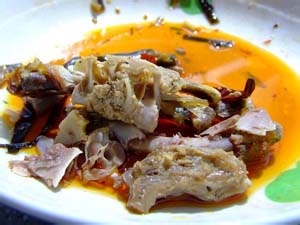
Most of us grew up hearing that we'd better clean our plates, but it's a bigger problem than our parents probably ever realized. Every year, global food waste amounts to about 1.3 billion tons, and that's such a big number that it's impossible to imagine. It's costing us about $750 billion annually, and the environmental waste is just as staggering.
我们中的大多数人在成长的过程中都会听到父母的谆谆教导:谁知盘中餐,粒粒皆辛苦。但是也许连我们的父母都没法意识到浪费粮食这一问题的严重性:每年全球食物的浪费数量高达13亿吨,这是一个难以想象的大数字。我们每年都要为此花费掉7500亿美元,而环境废物排放量依旧是惊人的。
Three times the annual flow of the Volga River is wasted on producing food that gets thrown away, yielding 3.3 billion tons of greenhouse gases. About 28 percent of our agricultural land is used to produce waste food. Clearing more and more land is putting countless plants and animals at risk. Meanwhile, about 870 million people are starving. A lot of the waste comes at the processing levels, but consumer waste is also incredibly high. Fruits and vegetables are often thrown away for being misshapen, not necessarily spoiled. There's a lot of food that's thrown away at the best-by date regardless of whether the food has spoiled. Many consumers think that the sell-by date and the best-by dates are the same, but that's just not the case. While plans are in place for reducing waste like packaging food in smaller containers and offering lower prices for less-than-perfect foods, there's still a long, long way to go.
每年三倍于伏尔加河流量的水浪费在生产而又被丢弃的食物中,同时伴有33亿吨的温室气体排放,大约有28%的农用土地被用于生产浪费掉的粮食,掠夺越来越多的土地正使得无数的动植物生存受到威胁。与此同时,大约有8.7亿的人仍处于饥饿状态。虽然生产阶段会产生很多浪费,但是消费者的浪费也是难以置信的高。蔬菜水果经常由于其畸形而不是因为变质而被丢弃。很多的食品在临近有效食用期时被丢弃而不管它们到底是不是过期变质了。很多的消费者认为保质期和有效食用期是一样的,但是这不是一回事。虽然人们已形成了很多减少浪费的计划,比方说把食物包装在一个更加小的饭盒中以及以更低的价格来处理一些不是最佳食用期的食物,但是,真正做到杜绝浪费,我们仍旧还有一段很长的路要走。
















